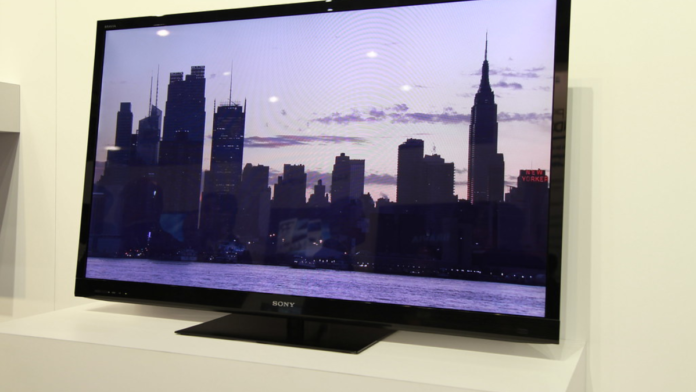In a move that could mean significant content capacity gains for bandwidth-strapped IPTV service providers, Thomson’s Grass Valley unit is unveiling its long-awaited “Mustang” MPEG-4 encoder chip at the National Association of Broadcaster’s convention in Las Vegas next month.
The three-year-old development effort involving some 60 engineers at Thomson’s technology division has paid off with completion of an ASIC (application-specific integrated circuit) that can better exploit all the extensions within the Advance Video Coding (AVC) profile of MPEG-4 than is possible using the DSPs (digital signal processors) at the core of most current-generation encoders.
The improvement in compression efficiency over Grass Valley’s first-generation MPEG-4 encoder cuts HDTV signal bandwidth to where broadcast-quality video streams suited for large displays can be delivered at just 4 megabits-per-second, according to Jean Macher, director of marketing at Grass Valley’s Video Network Systems group.
“Adding the audio and overhead data adds roughly another megabit to the bit rate,” Macher noted. “We’ll need another few months to put the chips in encoders. We expect our first HD encoders using the Mustang will begin shipping in September.”
Other manufacturers have been producing refinements to their MPEG-4 encoders as well, although Grass Valley is the first of the major suppliers to claim its platform can deliver broadcast-quality HDTV video at 4 mbps. The first company to announce a commercial-grade ASIC-based MPEG-4 HD encoder was Harmonic, Inc., with the introduction of its Electra 7000 last July.
Both Harmonic and Tandberg Television say their latest platforms have produced significant compression gains over previous generation systems. But what determines whether a signal is “broadcast quality” remains fairly subjective, which makes it hard to assess any given vendor’s claim against another.
For example, what an observer might verify as measuring up to broadcast quality at 6 mbps on a 50+” screen may require higher bit rates on massively large screens and lower bit rates on smaller screens. As previously reported (ScreenPlays, February, p. 34), Harmonic’s system can adjust bit rates to suit the quality requirements of different displays by delivering up to four different compressed streams from a single rack encoder.
Grass Valley was making its case for 4 mbps broadcast quality on a very large screen at a demo in Denver this week. The company ran side-by-side clips of 1080i HDTV on a tape that Macher said precisely simulated the output of the new chip and the output of the widely deployed Grass Valley ViBE MPEG-4 encoder at two pairs of data rates – 6 mbps vs. 12 mbps and 4 mbps vs. 8 mbps. To an unprofessional eye, there was barely any discernable disparity between the two encoded streams when compared at the 6 and 12 mbps rates and no discernable difference between them at the 4 and 8 mbps rates.
“It takes a lot of processor horsepower to implement all the best tools that are available in the AVC profile,” Macher said. Certain extensions, he noted, may not be available to a DSP-based system, and, while each of these extensions may contribute just a few percentage points of improvement, when they all are implemented the bandwidth savings can be significant. Adding these algorithmic calculations at the encoding end does not require adjustments in the decoding process as executed in new set-top-on-a-chip decoders, according to Macher.
“We’ve already validated that we can use these complex tools and be interoperable with existing MPEG-4 set-top boxes,” Macher said. “We’ll be demonstrating that interoperability at NAB.”
Grass Valley is also bringing to market other products it describes as “breakthrough” in conjunction with a new push on the part of the Video Network Systems group to gets its product suite message across in the North American market.
“Many people when you mention Grass Valley think about broadcast production – cameras, switches, servers, editing – but we’re also a leader in headend products with fast-growing sales here as well as in Europe.”
For example, he noted, all of DirecTV’s standard definition channels are delivered via Grass Valley MPEG-2 encoders. The company lost out in the bidding for the big DirecTV HDTV contract for MPEG-4 delivery of 1,500 local broadcast stations, which was won by Tandberg, because its Mustang chip was not ready for production, Macher said. But he said Grass Valley is very much in the thick of competition for the next big HDTV contract from DirecTV, which applies to plans to launch 100 national channels over two new satellites by year’s end.
The company is shoring up its competitive strength in the U.S. and abroad with two other new product announcements. One is focused on the mobile TV marketplace, where, Macher said, Grass Valley already supports 70 percent of the launches in this space worldwide.
The company’s new multi-channel MPEG-4 encoder, the Argos, adds enhancements to a mobile TV headend solution that also includes middleware to manage the IP video delivery stream as an overlay to 3G mobile networks.
The new encoder performs signal-preprocessing, encoding, scrambling and statistical multiplexing on multiple streams that can be delivered by the Grass Valley platform into DVB-H or MediaFlow systems. The new mobile product suite also includes an IP encapsulator supporting “time slicing” across multiple services within the transport stream, which allows a single content wholesaler to provide tailored services for multiple mobile network operators, including the addition of local and regional content.
In the broadcast distribution space, which is another important market for Macher’s VNS group, the company is bringing to market a transrater and splicer for HD MPEG-4 and MPEG-2 content that allows broadcasters to splice local content, advertising, logos and emergency messages into network-delivered programming without having to decode and re-encode the stream. The product, slated for availability by mid year, works as a statistical multiplexing controller for streams encoded by external systems as well as streams encoded by the Grass Valley platform.


